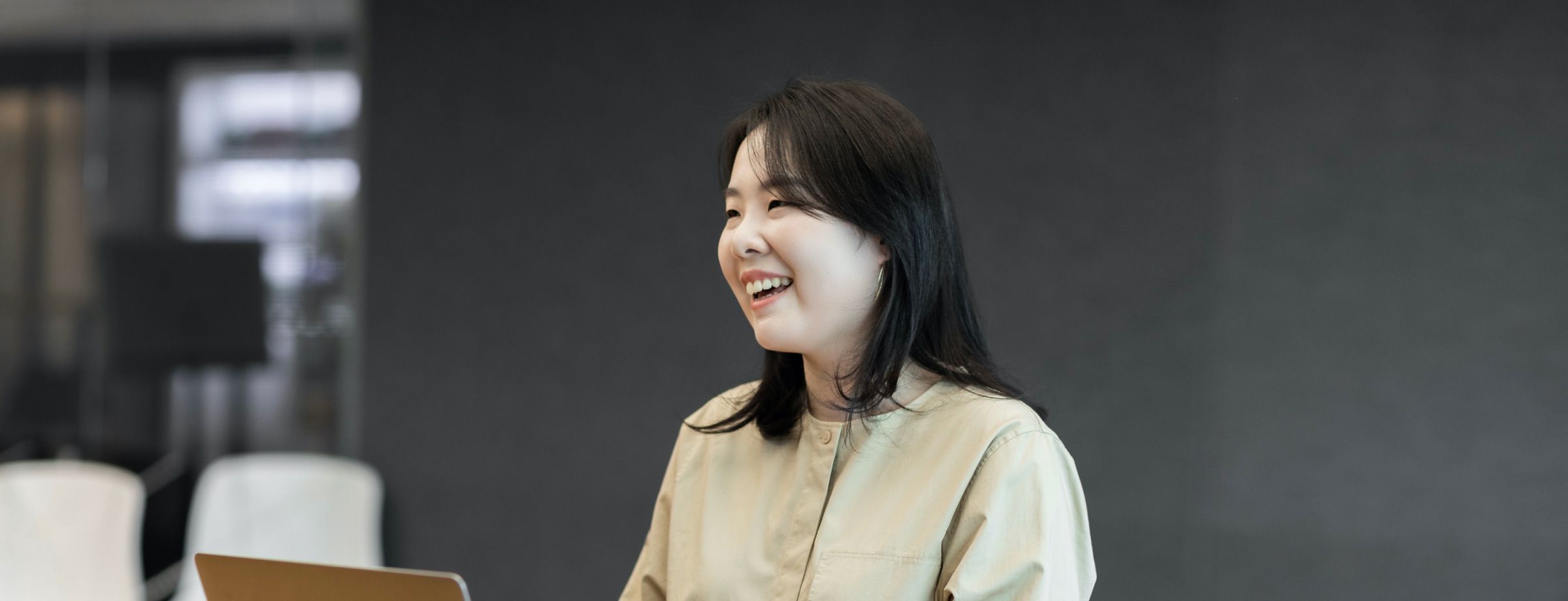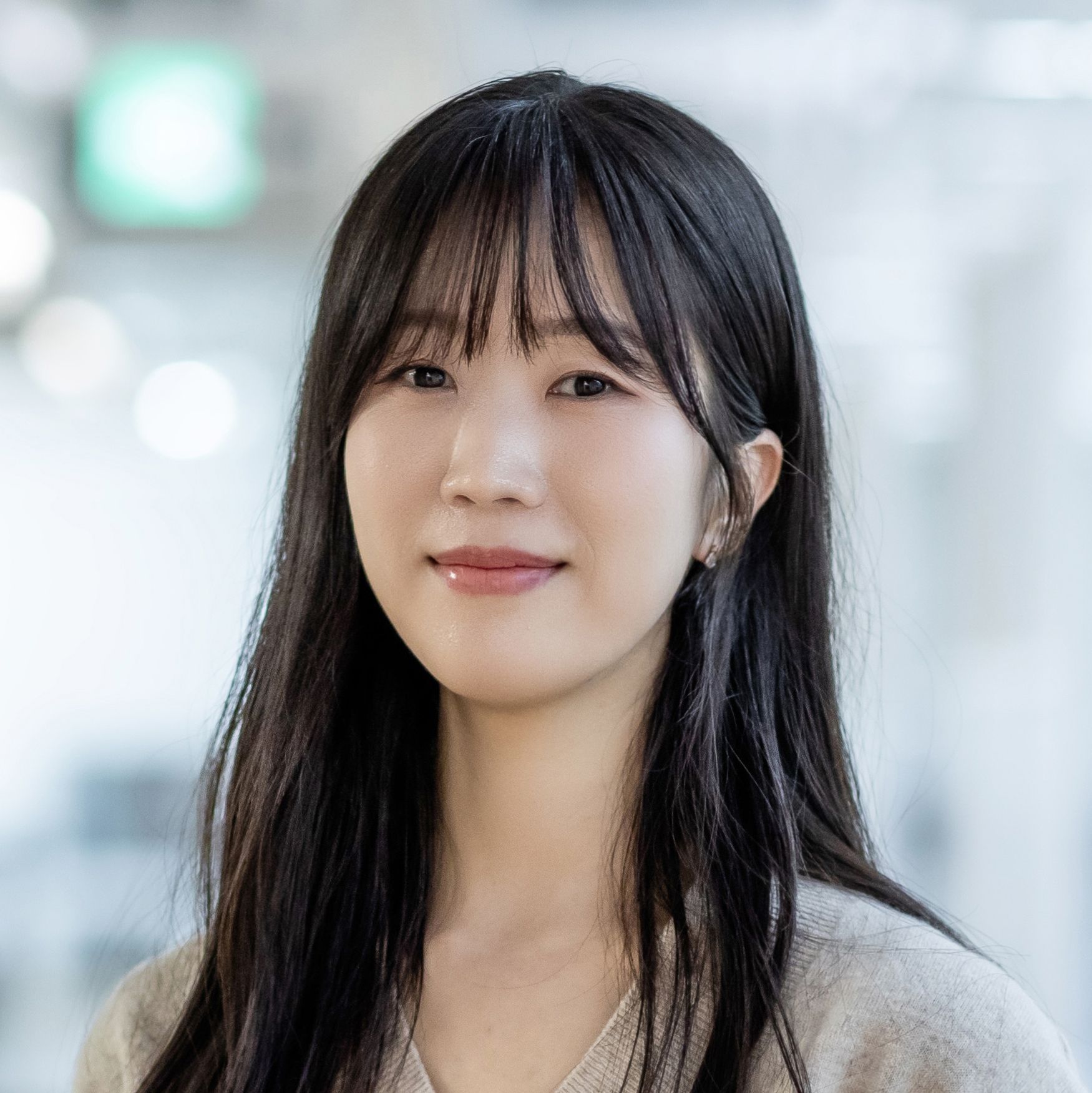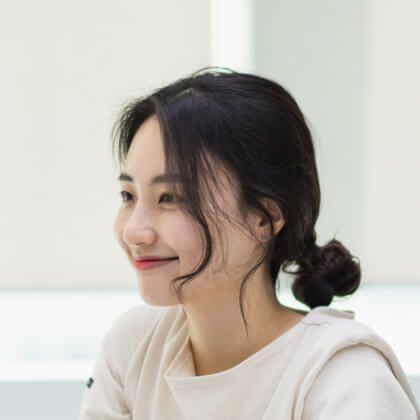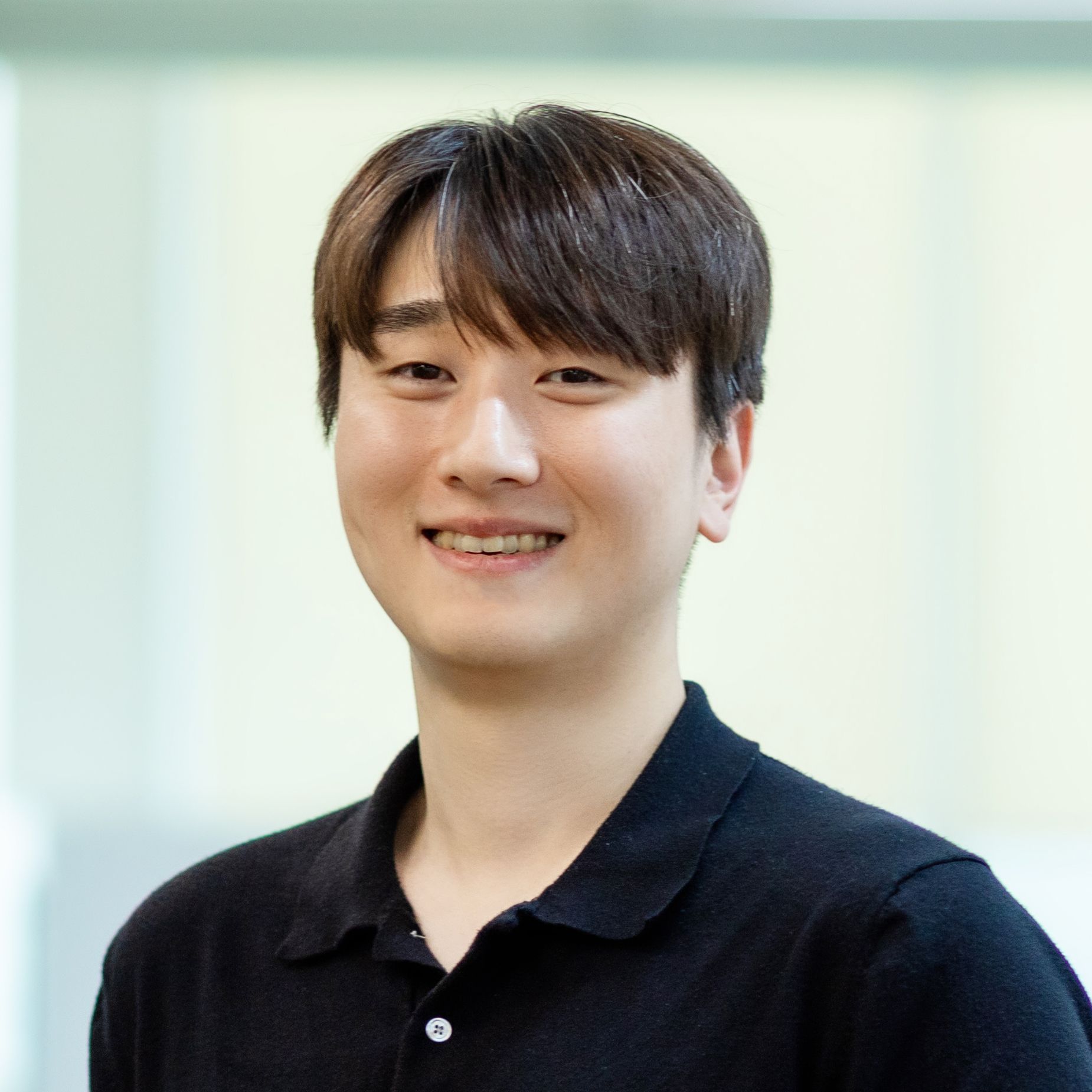Meet the Global LINERs
Design
Jimin Huh / Product Design / LINE Plus
Jimin Huh joined LINE as a summer intern in 2016 before joining the company. In her early days at LINE, she was in charge of product design for LINE’s main services, but nowadays she primarily works on the LINE Design System, devising the design guidelines and proposing standards. She also led the LINE New Design project. Let’s talk to Ji Min and learn about what she’s learned about design and how she’s grown since joining LINE.
A quick three-line summary
- By participating in the LINE New Design project, Jimin Huh contributed to revamping the LINE messenger design.
- Jimin’s LINE STYLE category of choice is “Perfect Details: Good is never good enough”
- Aiming to become a multidimensional super-designer.
About work
Q Please give us an introduction of your duties and responsibilities.
I am responsible for the LINE New Design project as a part of the LINE Design System Team under the Product Design. We are the team that establishes LINE’s design standards and makes design guides for designers and developers. Recently, we led the LINE New Design project, completely revamping the messenger app's design for the first time since it launched 10 years ago. We united the UI components to set up a basis for the new design style to be applied with consistency and unity. Before I took on this role, I was in charge of designing a variety of features within the messenger app. I worked on designing services like LINE Square and LINE Call, and was also responsible for enhancing the Home tab (Friends list), which is the face of the messenger, and restructuring how the contents are arranged.
Q Could you please explain a little more about LINE New Design project?
As the LINE messenger app had been through many updates over the past decade, adding a variety of services along the way, we had slowly lost the overall unity of the app. As a result, we needed to revise the design, to give LINE a greater sense of unity and better define the visual rules it uses. Unlike regular projects, this overhaul was focused mostly on the design, so the design group proposed it and served as the main planners. It was not easy to fulfill the roles of designer and planner at the same time. There were countless steps involved and so many people to convince, and I remember worrying whether I’d ever get this project done. To get it all done, we first concentrated on our role as designers. Our main goal was to enable users to focus more on the contents, with a clean, tidy screen, so we made the bold choice to change the header to white. We also organized our design direction as the designers went through a series of drafts to test the overall look & feel and the UX, going through several iterations. Once we decided on the main direction, we applied white headers to the major tabs of the messenger app, including the Home tab, Talk tab, Timeline, News (or Today in some regions) and Wallet services, and we proceeded to modify the overall UI design accordingly. While working on the design, we also shared our progress with the developers and other designers so we could have a guide everyone could use. It was particularly important for the design outputs to be applicable in the actual environment after development was done, so we carried out some intense discussions with the developers to adjust the LINE messenger. Finally, after months of work, we were able to launch that new look for the LINE messenger. Fortunately, we received a lot of positive feedback, with many people saying that the old, dark navy headers had felt a bit heavy and out-of-date, whereas the new, white headers felt fresh. There’s nothing as satisfying as hearing great reviews like that.
Q Is there anything different about working for a company with such a global user base?
When designing the UI, we have to keep in mind the variations from one language to another. For Japanese or Chinese, characters with many strokes are not clearly legible once they become bold or smaller in size. Russian, on the other hand, has many words that are longer than you think, so more often than not the text get wrapped unexpectedly. Our core design is made based on English, but for languages with special characteristics, we make sure to test them thoroughly. In addition, I remember that we once had to change the overall colors of the functions used globally after receiving feedback that gray cannot be used in certain places due to cultural differences. There are also matters to be considered when communicating with colleagues overseas from various countries. I mainly communicate with them on the LINE messenger or Slack but there are times when it is difficult to deliver the subtle nuances, so I take a lot of time thinking about whether I am accurately expressing my intentions. I try to avoid a situation where poor communications lead to having to repeat conversations two or three times.

Experiences of failure and growth
Q Please give us an example of a failure you’ve encountered.
It was not really a failure but I did have a sad experience where a project was suspended or canceled. I think it was my second year and there was a design project that I had put my heart and soul into. Unfortunately, I learned towards the very end of the development that the project was canceled due to business reasons. The lead and senior designers were probably dejected as well but they comforted me by saying that these things can happen. At the time, I felt I was going to be fine but, as I sat down at my desk, I suddenly realized I had nothing to do, which made me feel great emptiness. I think I was deflated for about a week. However, thanks to that experience, I realized that a project can be scrapped at any time for any number of reasons and that I shouldn’t grieve too much over it. I also learned how to break out of a slump on my own.
Q Please tell us about any experience in which you felt you are growing.
I think my vision has expanded for sure as I’ve accumulated experience. I have become capable of getting absorbed into a project quickly regardless of what I’ve been given, and I’m good at proposing different ideas no matter how rough they may be. I have also learned to draw the UI according to the UX that I have in my mind even if we don’t have any detailed plans in place. Instead of producing pretty designs, I have learned how to utilize my time efficiently, which helps when I have a task that needs to proceed quickly.
Thoughts on competence
Q What kind of competencies do you think you need to perform your work well?
I think the most important thing is to follow trends closely. I constantly examine services that I believe are the best when it comes to UI visual or UX elements, and strive to make them my own. In the past, our job description was limited to UI design, but nowadays we call it product design. That is why I think it is necessary for us to experience all sorts of different trends to learn an UX-oriented mindset and to study and examine usability more in-depth. The LINE STYLE item I try to follow the most is the “Perfect Details: Good is never good enough.” In the design world, small differences may be extremely important, even if they seem trivial and are difficult to apply. Designing a feature that a user wants and knowing where it should be located so the user can access it without thinking about it is critical. So, I spend a lot of time thinking about putting features in their right place and designing them not to be easy to use without troubling our users.

Special experiences at LINE
Q Please describe a memorable event outside the office.
I remember visiting the Japan office for my onboarding. We had an opportunity to experience how Japanese users actually use the LINE services and I learned that LINE services are deeply established in their daily lives, from the subway to convenient stores. I was extremely proud of working at a company that makes services like that and became determined to do my best.
Q What are some of the things you had a hard time adjusting to?
At first, I think I was surprised how free and horizontal the culture is at LINE. After graduating university, I believed that a work day begins by greeting my team manager in the morning and staying at work until the late evening if the team manager works overtime. My peers also thought the same so I remember being a bit nervous about what to do every day, which is cute now that I look back on it.
Q Is there any benefit or culture that you think is particularly notable?
I attended a Facebook conference in 2019 on a company-funded business trip. I was surprised that the company has a system for sending employees to international conferences, but I was quite happy to see LINE supports the growth of its own designers. To make the most out of the trip, I made of point of learning all I could at the conference, going to all sorts of events. It really boosted my confidence and gave me a chance to broaden my perspective as a designer. Another part of LINE that I think is notable is our work-from-home system, when has been important in the face of COVID-19. I talked a lot about it with my friends and they are quite envious of me. For most of my friends who work for other companies, they only get a couple of weeks of work-from-home or they have to take turns using it. But, at LINE, most of us are working from home most of the time. Furthermore, rather than implementing the work-at-home system reluctantly, LINE actively recommends it and provides guides to help everyone be as productive as possible while working from home.
Wrap-up
Q Do you have any goals you personally want to achieve at LINE?
I want to be an outstanding product designer who excels in all the relevant fields, like a multidimensional super-designer. Of course, it’s great to be exceptional in a single field, too, but the trend today puts more emphasis on being well-rounded, so you can tackle whatever task you are assigned at any time. In that regard, I believe LINE is a great environment for me to achieve what I am aiming for. At startups, many employees have similar levels of careers and experience, so it can be harder to grow there, but LINE has a lot of senior designers who are awesome mentors, which creates a good environment to grow. LINE’s design work is very well-archived and you can almost call it a textbook of UI design. It is incredible to be able to check and study the thoughts and latest creations of my fellow designers.
Q Do you have anything to say to those who may be interested in your profession?
Skill-wise, I believe it is important to be able to do more than draw pretty images, but also to consider the UX aspect. The ability to produce visual images can be easily developed if one works at it is hard enough, but the UX element is a type of capability that I think is difficult to really learn well unless one spends a good deal of time studying it intensely. So, it would be great if you are a person who understands and enjoys UX issues. I also think that it would be great to have people who can communicate well. I used to be quite passive about voicing out my opinions, but as time passed and experiences piled up, I began to realize that not expressing my thoughts and opinions can actually make others uncomfortable. It’s great to have debates and discussions to establish good ties among colleagues!




